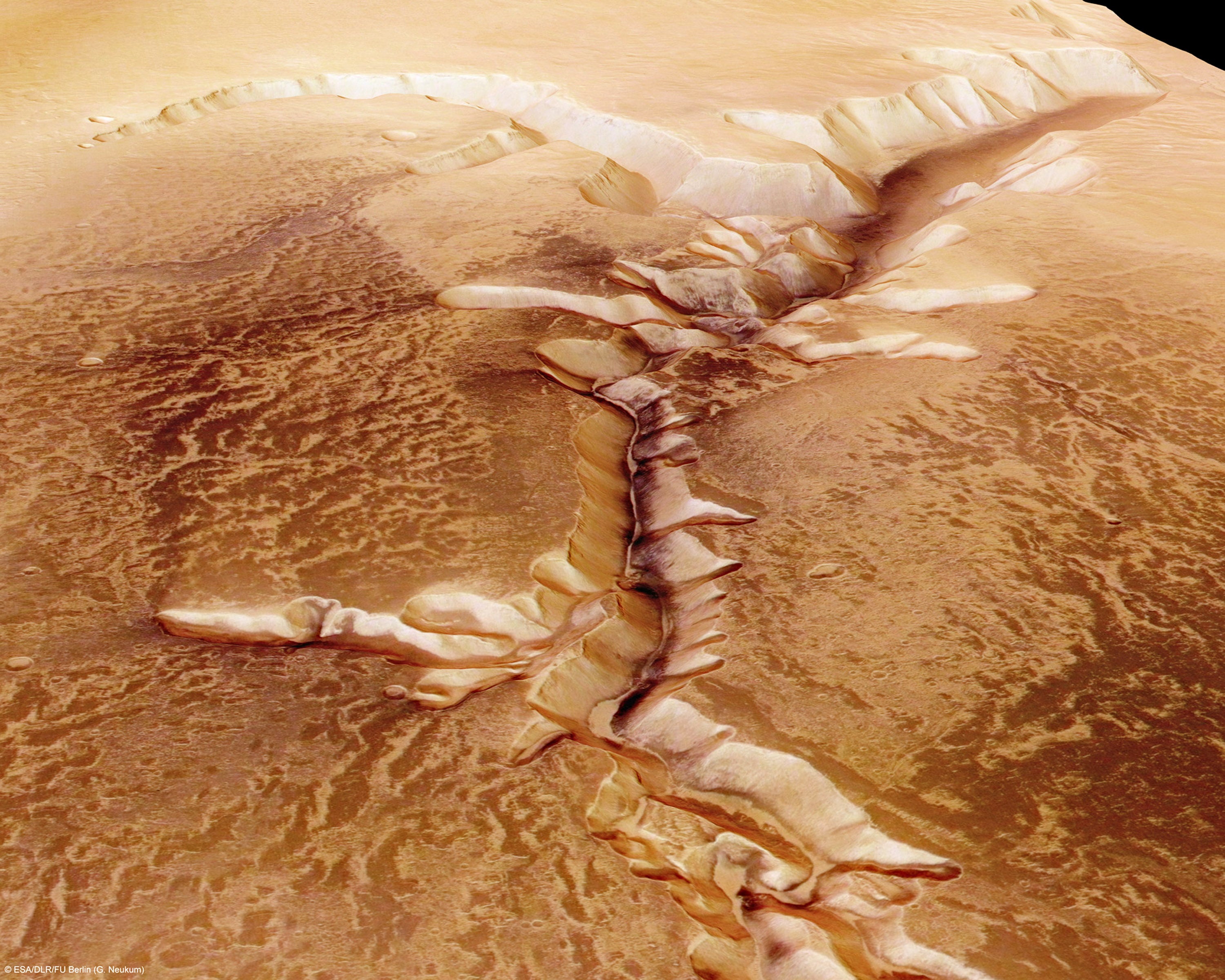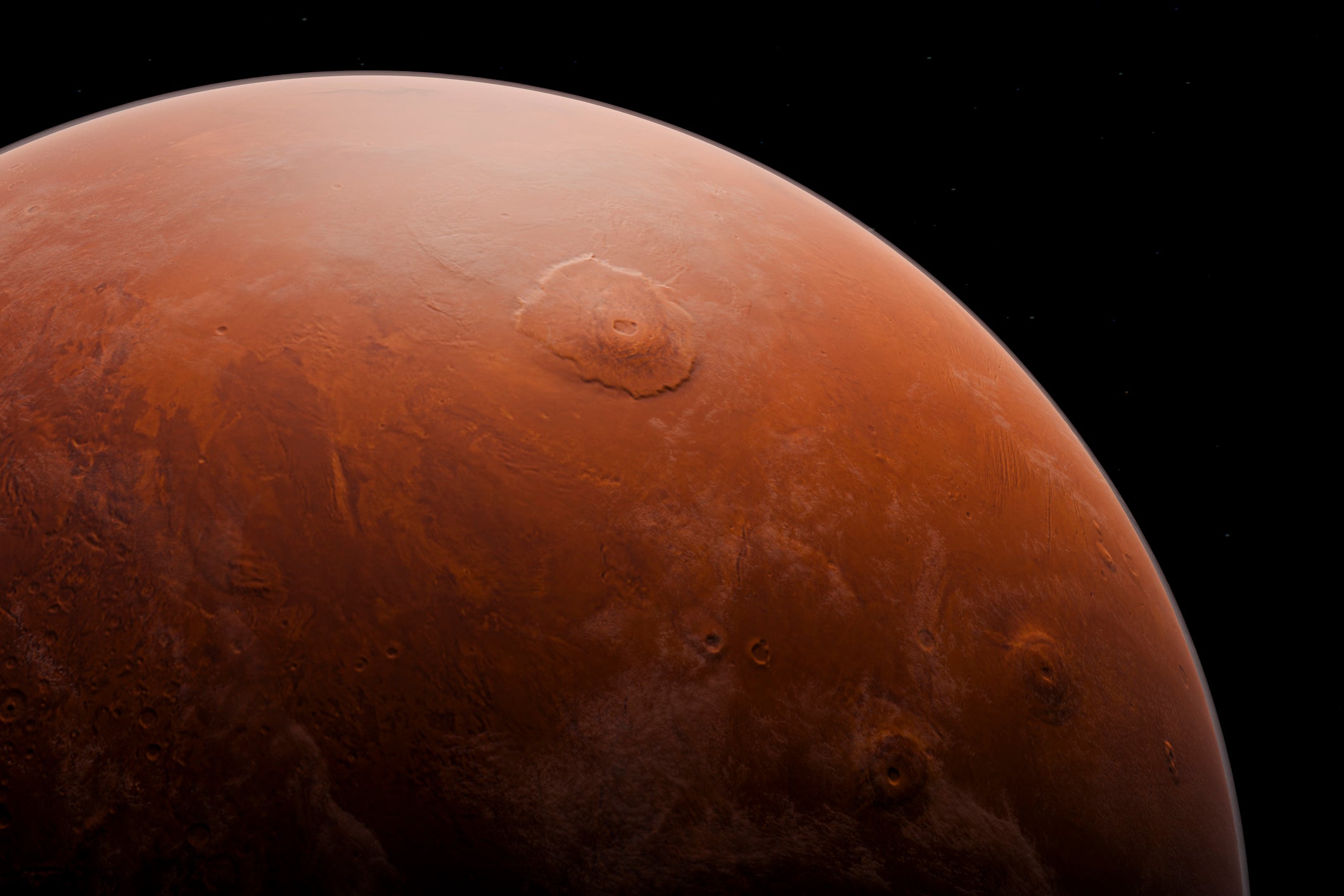New research has challenged a long held theory about a peculiar Martian landmark, potentially changing the way scientists understand the red planet’s capacity to sustain life.
The findings call into question the theory that dark streaks on Martian slopes indicate the presence of liquid water, suggesting instead that these features are the result of dry processes.
A study of roughly half a million of these streaks, captured in satellite imagery dating back to the 1970s, points to the accumulation and movement of dust as the likely culprit, reinforcing the image of Mars as a dry, inhospitable planet.
Scientists analysed approximately 87,000 satellite images, including data from NASA’s Mars Reconnaissance Orbiter, focusing on these transient streaks.
Co-leader of the study Adomas Valantinas said: “The tiny dust particles can create flow-like patterns without liquid. This phenomenon occurs because extremely fine dust can behave similarly to a liquid when disturbed – flowing, branching and creating finger-like patterns as it moves downslope”

The postdoctoral researcher in planetary sciences at Brown University added: “It’s similar to how dry sand can flow like water when poured. But on Mars, the ultra-fine particles and low gravity enhance these fluid-like properties, creating features that might be mistaken for water flows when they’re actually just dry material in motion.”
The streaks, which appear suddenly and fade over several years, typically measure between 1,970 and 2,540 feet long and often exhibit branching patterns as they navigate around obstacles.
The study proposes that fine dust particles from the Martian atmosphere settle on sloped terrain. Events like wind gusts, meteorite impacts, or marsquakes then dislodge this accumulated dust, causing it to flow down the slopes, creating the streaked appearance.
This contradicts previous interpretations that considered these streaks as potential signs of liquid water flows, and therefore, possible habitats for life.
The streaks are predominantly located in the northern hemisphere of Mars, clustered in three main regions: Elysium Planitia, Arabia Terra, and the Tharsis volcanic plateau, home to the immense Olympus Mons volcano.
Researchers said limitations in the resolution of the satellite images mean they account for only a fraction of slope streaks. They estimated the actual number at up to two million.
Water is considered an essential ingredient for life. Mars billions of years ago was wetter and warmer than it is today. The question remains whether Mars has any liquid water on its surface when temperatures seasonally can edge above the freezing point.

It remains possible that small amounts of water – perhaps sourced from buried ice, subsurface aquifers or abnormally humid air – could mix with enough salt in the ground to create a flow even on the frigid Martian surface. That raises the possibility that the slope streaks, if caused by wet conditions, could be habitable niches.
“Generally, it is very difficult for liquid water to exist on the Martian surface, due to the low temperature and the low atmospheric pressure. But brines – very salty water – might potentially be able to exist for short periods of time,” said planetary geomorphologist and study co-leader Valentin Bickel of the University of Bern in Switzerland.
Given the massive volume of images, the researchers employed an advanced machine-learning method, looking for correlations involving temperature patterns, atmospheric dust deposition, meteorite impacts, the nature of the terrain and other factors. The geostatistical analysis found that slope streaks often appear in the dustiest regions and correlate with wind patterns, while some form near the sites of fresh impacts and quakes.
The researchers also studied shorter-lived features called recurring slope lineae, or RSL, seen primarily in the Martian southern highlands. These grow in the summer and fade the following winter. The data suggested that these also were associated with dry processes such as dust devils – whirlwinds of dust – and rockfalls.
The analysis found that both types of features were not typically associated with factors indicative of a liquid or frost origin such as high surface temperature fluctuations, high humidity or specific slope orientations.
“It all comes back to habitability and the search for life,” Bickel said. “If slope streaks and RSL would really be driven by liquid water or brines, they could create a niche for life. However, if they are not tied to wet processes, this allows us to focus our attention on other, more promising locations.”






